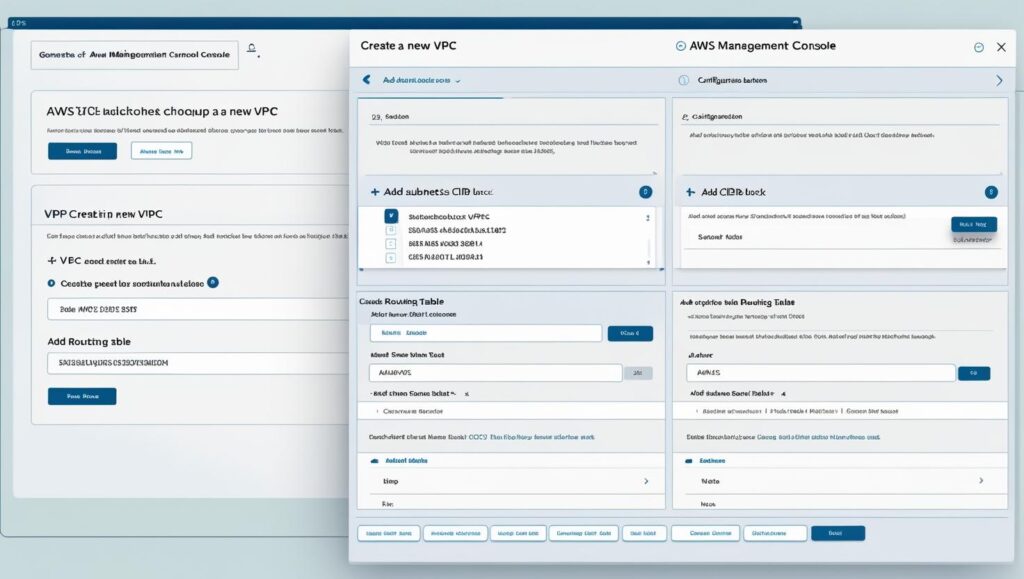Introduction to AWS VPC
In today’s cloud-first world, creating secure, scalable, and flexible networking environments is crucial for businesses of all sizes. Amazon Web Services (AWS) provides a powerful solution in the form of AWS Virtual Private Cloud (VPC). AWS VPC allows you to launch AWS resources into a virtual network that you define, offering complete control over networking infrastructure.
This guide serves as the ultimate AWS VPC tutorial, tailored for developers, system administrators, tech professionals, and businesses aiming to optimize their cloud networking.
What is AWS Virtual Private Cloud (VPC)?
AWS VPC is a customizable and isolated section of the AWS cloud where you can define and manage your virtual networking environment. From setting IP ranges to creating subnets and configuring route tables, VPC gives you the flexibility to design a secure, scalable network architecture for your cloud applications.
You can connect your VPC to your on-premises data centers using VPN, define granular access controls using security groups and NACLs, and integrate with various AWS services via endpoints.
Why Use Amazon VPC?
Benefits of Using AWS VPC
Enhanced Security: Fully isolated environment with built-in firewalls
Custom Network Architecture: Define subnets, IP ranges, and routing policies
Scalability: Easily expand resources as needed
Cost-Efficient: Pay-as-you-go pricing for networking components

Core Components of AWS VPC
Understanding the building blocks of AWS VPC is essential for effective implementation.
1. Subnets
Subnets divide your VPC into smaller segments. You can create public and private subnets to isolate workloads.
2. Route Tables
Route tables determine the traffic flow within your VPC and to external networks.
3. Internet Gateway (IGW)
Enables communication between resources in your VPC and the internet.
4. NAT Gateway
Allows instances in a private subnet to access the internet for updates without being exposed.
5. Security Groups and Network ACLs
Implement fine-grained control over inbound and outbound traffic.
6. VPC Endpoints
Use AWS VPC endpoints to privately connect to AWS services without internet access.
7. VPC Peering
Facilitates secure communication between different VPCs across the same or different AWS accounts.
How to Create a VPC in AWS
Creating a VPC manually or using the AWS VPC wizard is a straightforward process. Here’s a quick guide:
Step 1: Define Your VPC
Navigate to the VPC dashboard
Choose “Create VPC”
Enter CIDR block (e.g., 10.0.0.0/16)
Step 2: Create Subnets
Define public and private subnets
Distribute across different Availability Zones
Step 3: Configure Internet and NAT Gateways
Attach an Internet Gateway to the VPC for public subnets
Create a NAT Gateway for outbound traffic from private subnets
Step 4: Set Up Route Tables
Configure route tables for each subnet
Define routes to the Internet Gateway or NAT Gateway
Step 5: Configure Security
Use security groups for instance-level firewall
Implement NACLs for subnet-level access control
AWS VPC Pricing Overview
AWS VPC pricing is primarily pay-as-you-go and based on:
NAT Gateway usage
Data transfer out to the internet
Elastic IPs beyond free tier
VPC Endpoints usage
AWS VPC Cost Calculator
Use the AWS Pricing Calculator to estimate your monthly spend. Consider alternatives like VPC Endpoints instead of NAT Gateway to reduce costs.
Key AWS VPC Features
IPv4 and IPv6 Support
Elastic IP Address Management
VPC Flow Logs for network traffic monitoring
DNS Hostnames and DNS Support
PrivateLink for private service exposure
AWS VPC Security Best Practices
Use multiple Availability Zones for redundancy
Enable VPC Flow Logs for auditing and compliance
Apply least privilege principle to IAM roles and policies
Restrict access using Security Groups and NACLs
Use AWS Config and GuardDuty for compliance and threat detection

AWS VPC Use Cases
1. Hosting Scalable Web Applications
Use public subnets for frontend and private subnets for backend resources.
2. Hybrid Cloud Connectivity
Connect on-premise data centers via VPN or Direct Connect.
3. Data Processing and Analytics
Isolate big data workloads in private subnets for enhanced performance and security.
4. Microservices Deployment
Deploy isolated services across VPC subnets and use AWS VPC peering for internal communication.
AWS VPC vs EC2-Classic
EC2-Classic has been deprecated in favor of AWS VPC for enhanced flexibility, isolation, and feature support. VPC provides better security control, performance monitoring, and scalability.
Conclusion
The Amazon VPC service is a fundamental building block for any AWS architecture. Whether you’re a startup or an enterprise, implementing AWS Virtual Private Cloud ensures your cloud resources remain secure, scalable, and performance-optimized.
Take advantage of features like VPC Flow Logs, NAT Gateways, and VPC Endpoints to fine-tune your network.
Mastering VPC means mastering the cloud.
